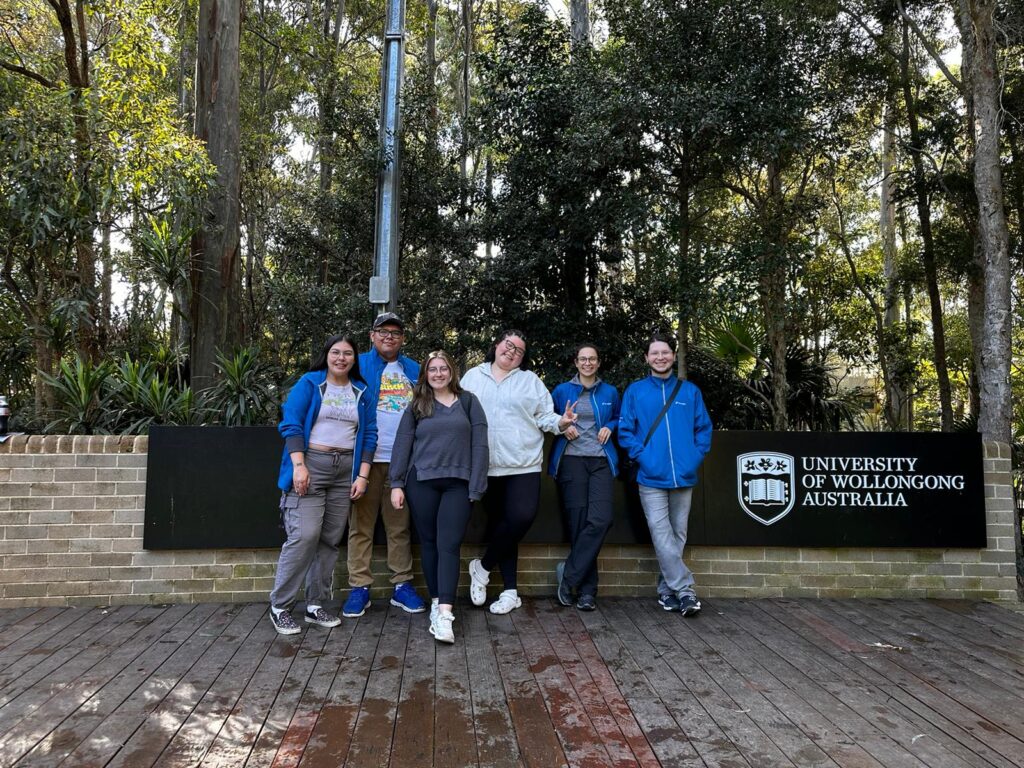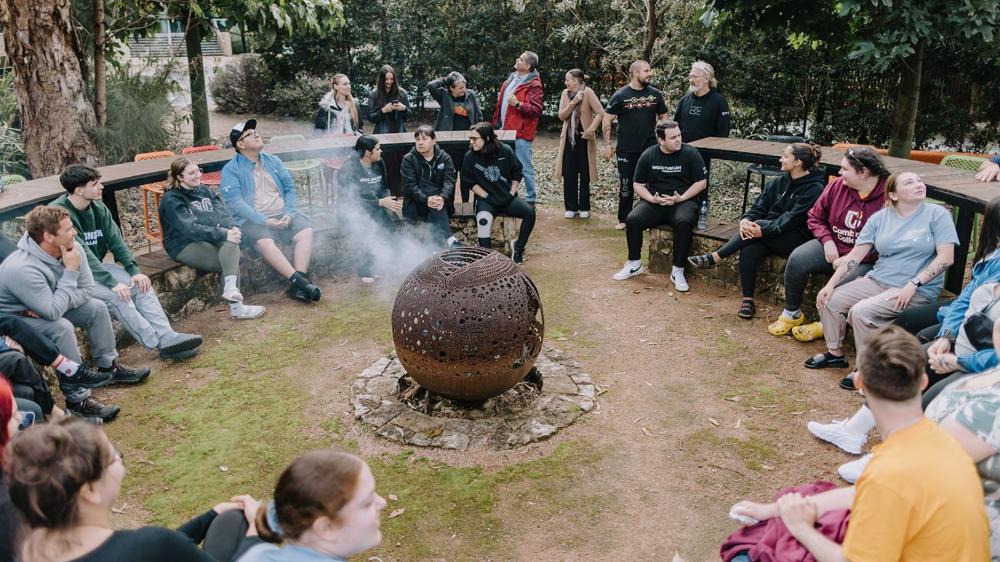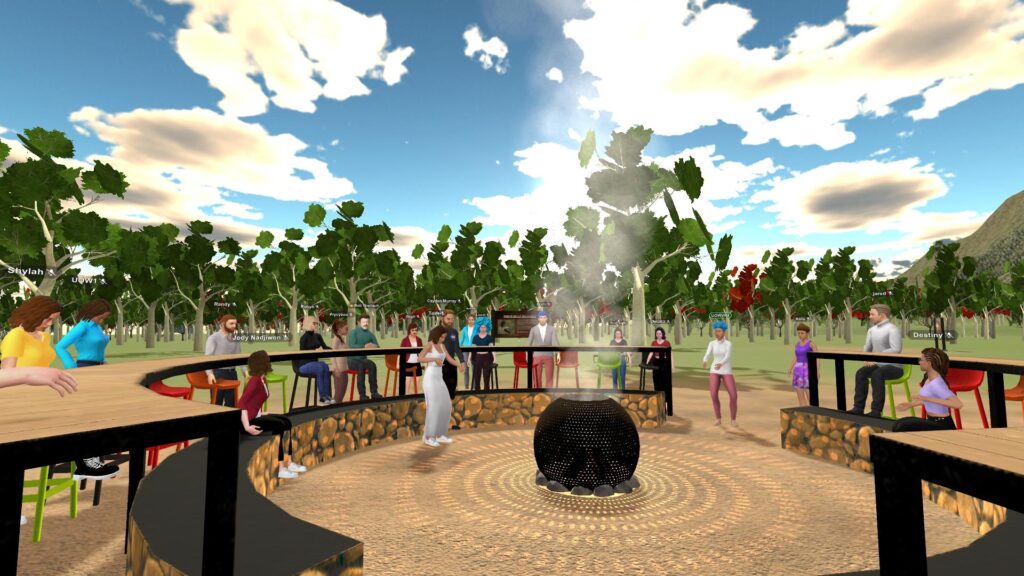Indigenous Georgian College students travel to Australia after unique virtual learning project
Aug. 6, 2024
Eight Indigenous Georgian College students recently returned from a two-week study tour to Australia. The experience complimented a first-of-its kind, collaborative, immersive virtual learning project with multiple postsecondary institutions meant to foster meaningful connections among diverse Indigenous communities.
Lauryn Edwards, a Georgian student in the Indigenous Community and Social Development program, was one of the participants who travelled to the University of Wollongong in Australia with other students and employees from Algonquin and Cambrian colleges in Ontario.
“This was a trip of a lifetime and one I will remember for a long time,” she said. “I love Australia wholeheartedly and it will forever be a second home to me for I now have new relatives and a family. This trip helped me grow so much as a person and showed me that my spirit and heart can grow even bigger.”

About 20 Canadian students from the three Ontario colleges went on the study tour, where they got to take a guided walk through the breathtaking Australian bush and hear stories from Indigenous Elders and rangers. They also attended a variety of guest lectures on topics such as history, culture, language, Truth and Reconciliation, traditional medicines and foods, and art, as well as participated in a whale watching cruise with First Nations experts and guest lecture on Indigenous whale stories.
At the end of the tour, students had the opportunity to present their own research ideas at a First Nations Collective seminar, gaining valuable academic experience in a culturally safe and welcoming setting.

In addition to the study tour, Georgian students were also part of an immersive virtual learning project that complimented the study tour experience. The project, called Indigenous Horizons: Indigenous student engagement through virtual reality learning and mobility experiences, was funded through the Government of Canada’s Global Skills Opportunity Innovation Fund, administered by Colleges and Institutes Canada.
Each Canadian college played a unique role to cultivate a virtual reality learning environment with the University of Wollongong before travelling to Australia.
- Georgian developed innovative, first-of-their-kind First Nations, Métis, Inuit and University of Wollongong virtual reality worlds, in which replicas of real places, historical artifacts and more were created. By expanding immersive learning technologies, students were able to participate in unrivaled learning experiences.
- Algonquin was responsible for completing the research component of the project, which was supported by its Applied Research and Mamidosewin Centre, and informed the virtual reality and curriculum development.
- Cambrian developed the academic curriculum and delivered a pilot course using the virtual reality platform.
Kelly Watson, Director of Global Engagement at Georgian College, said the partnership between Cambrian College, Algonquin College, Georgian College, and the University of Wollongong has been nothing short of transformative.
“This collaboration has enabled us to push the boundaries of what is possible. By leveraging our collective strengths in research, virtual reality, Indigenous cultural education, and student mobility, we have created bridges to new worlds and new possibilities for our students that provide them with a global perspective of Indigenous culture and community,” she said.
Georgian enhances learning landscape with virtual reality
This is Georgian’s first Indigenous-focused study abroad tour, and some of the students will receive up to two credits through this experience. One of the course credits comes from Cambrian’s Indigenous Global Perspectives course, which offers students the opportunity to explore immersive virtual worlds created by Georgian that compliment Cambrian’s course.
Over the past year, Georgian staff and faculty developed a unique and groundbreaking virtual reality environment called Turtle Island and Beyond, which hosts three Indigenous Canadian worlds: First Nations, Métis, and Inuit, as well as an Australian world, the UOW Indigenous campus experience. The Debwewin Miinwaa Naaskodaadiwin Miikaans (Truth and Reconciliation Trail) from the Orillia Campus was also added into these virtual worlds, allowing students to learn more about each other’s cultures.
Immersive learning experience ‘truly an amazing experience’
These worlds were designed around a course that was piloted over a seven-week period starting in May, and students interacted in them to receive elements of Indigenous cultural teachings, knowledge and history. Audio learning was included in each of the worlds, and recordings of the Seven Grandfather Teachings were done by Ernestine Baldwin, a Visiting Elder at Georgian.
Samantha Leggo, a student in the Social Service Worker program at the Orangeville Campus was thrilled with her learning experience.
“I must recommend this course to all students who want a realistic journey while learning. The excitement of hearing the wildlife and seeing their movements and listening to the teaching around a crackling fire was truly an amazing experience,” she said. “The instructors made the learning very enjoyable with their enthusiasm for their Indigenous culture. I could not be happier this course was offered.”
Before Georgian students travelled to Australia, they were also able to experience a virtual reality simulation of an airport and flight from a passenger’s perspective to show students who were first-time fliers know what to expect.
Georgian a recognized leader in immersive educational technology
The development of virtual reality programming at Georgian has been years in the making, and Indigenous Studies students have been using immersive technologies as part of their studies since 2020. The Indigenous Horizons project’s heavy focus on virtual reality exemplifies how Georgian’s committed to and a recognized leader in immersive educational technology.


As Team Georgian continues growing the Turtle Island and Beyond virtual space, up to 13 global worlds – representing each section on a turtle shell – can be added. They can feature different geographical locations, depictions and sounds, and even switch between day and night experiences. Along with additional worlds, future plans include finding additional funding to offer the courses and immersive experiences to non-Indigenous students and share the project learnings and best practices with other institutions and interested parties.
Immersive learning project a ‘labour of love and heart’
Michele O’Brien, Coordinator for Indigenous Studies and Liberal Arts programs at Georgian, was a major contributor to the virtual reality project.
“This project has been a labour of love and heart and the most amazing adventure. The Turtle Island cultural worlds introduced students to history, teachings, legends and knowledge, and they experienced a vast number of similarities in colonialism, customs, beliefs and traditions,” she said. “The students were immersed in environments that they would otherwise not have the opportunity to experience in person. The feedback from the students was filled with enthusiasm, wonder and awe, and, as a college, we’re excited to see how we can continue innovating in the virtual reality space.”